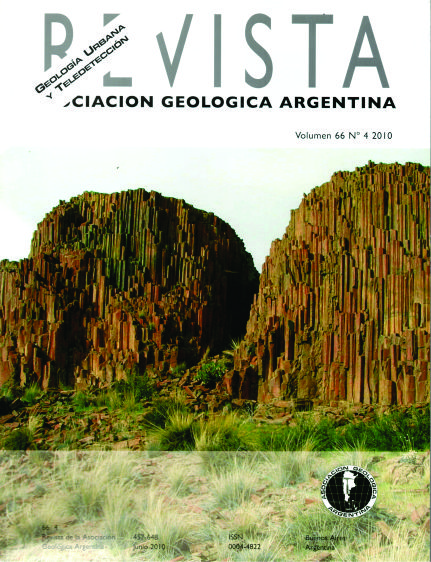Radar images (ERS and RADARSAT) utilization for lithological discrimination and structural cartography of the central part of the Desaedo Massif, Santa Cruz province
Main Article Content
Abstract
The Deseado Massif is an extensive morphostructural unit characterized by an important bimodal volcanic activity that has been occurred during the Jurassic period, in a tectonic environment dominated by extensional conditions. The diverse tectonic events that have occurred in this region are manifested by the presence of varied magnitude and orientation structural lineaments that have affected different geological units. The geological mapping of this region is benefit by the regional observation. The superficial extension of the present units and the outcropping discontinuity, usually hinder the field geological mapping and difficult the field recognition of the structural features, being facilitated their identification at a small scale. The results of an investigation based on the use of radar images (ERS-1 and ERS-2 SAR, and RADARSAT-1 SAR) for the lithological discrimination and the structural cartography, through the application of different digital processing techniques and visual interpretation, are presented in this contribution. The tone and texture attributes of the radar images and their relationship with the lithological units of the area are analyzed, as well as the radar perception of directional features and the utility of the different digital analysis procedures for the extraction of lineal features and patterns that could be related to structural lineaments.
Article Details

This work is licensed under a Creative Commons Attribution-NonCommercial 4.0 International License.
Nota de copyright
Los autores conservan los derechos de autor y garantizan a la revista el derecho de ser la primera publicación del trabajo licenciado según una licencia de atribución Creative Commons que permite a otros compartir el trabajo con el reconocimiento de la autoría y de la publicación en la que se publicó por primera vez.
Declaración de privacidad
Los nombres y direcciones de correo electrónico introducidos en esta revista se usarán exclusivamente para los fines declarados por esta revista y no estarán disponibles para ningún otro propósito u otra persona.

